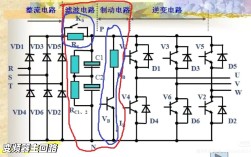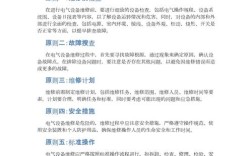这是一款大约2012-2025年推出的32英寸高清液晶电视,属于比较经典的型号,虽然已经有些年头,但维修价值依然存在,尤其是对于有动手能力的朋友。

在开始任何维修之前,请务必牢记安全第一:
- 断电操作:在进行任何内部检查或维修前,务必拔掉电视的电源线。
- 防电击:即使拔掉电源,电视内部的大容量电容器(电容)中仍可能储存有高压电,非常危险,如果你不熟悉如何安全地放电,请勿轻易触碰这些部件。
- 防止静电:人体静电可能会损坏电视的精密电路板,在操作前,请触摸一下金属水管或暖气片,释放静电。
第一步:故障诊断(先判断问题出在哪)
维修的第一步不是拆开电视,而是通过观察现象,初步判断故障范围,这能让你事半功倍。
观察电源指示灯
电源指示灯是电视最基本的状态反馈。
- 指示灯不亮,电视无任何反应:
- 大概率是电源板故障,电源板没有工作,无法为整机供电。
- 也可能是电源线、插座或遥控器/电视机开关本身的问题,请先排除这些外部因素。
- 指示灯亮,但颜色异常(如红色闪烁):
- 这通常是保护电路启动的信号,电视检测到内部有故障(如电压过高、灯板短路等),为了防止损坏,电源板会自动关闭输出,红灯闪烁的次数可能对应不同的故障代码。
- 指示灯常亮(绿色或蓝色),但屏幕不亮:
- 这说明电源板工作正常,已经为主板和屏供电。
- 故障点可能在于主板、屏驱动板(TCON板)或屏幕本身(液晶屏)。
观察屏幕
- 屏幕全黑,但背光亮:
- 在黑暗中仔细看屏幕,如果能看到非常暗的图像,或者用手电筒斜照屏幕能看到图像,这说明背光灯条是好的。
- 故障点:主板没有送出图像信号,或者屏驱动板(TCON板)没有工作,或者屏幕逻辑板损坏。
- 屏幕有图像,但背光不亮:
- 屏幕上能看到正常的台标或菜单图像,但整体非常暗,需要很亮的环境才能看清。
- 故障点:电源板的背光供电没有输出,或者主板没有发出点亮背光的控制信号(通常是高电平或PWM信号),或者灯条本身损坏。
- 屏幕显示异常:
- 花屏、马赛克、竖线/横线、白屏、黑屏:这通常是屏幕逻辑板或屏驱动板(TCON板)的故障,主板故障也可能导致信号异常。
- 图像缺色、偏色:可能是排线松动或屏幕逻辑板问题。
第二步:根据故障进行针对性维修
情况A:电源板故障(最常见)
电源板是电视的“心脏”,故障率最高,常见问题有:

- 保险丝烧毁:通常是后级电路有短路导致,更换保险丝前,必须找到短路点并排除,否则会再次烧毁。
- 副电源芯片(如VIPer12A/22A)损坏:这是小功率电源的“大脑”,非常容易损坏。
- PFC(功率因数校正)电路故障:导致主电压无输出或异常。
- 高压输出电路故障:导致背光供电无输出。
维修方案:
- 更换电源板:这是最简单、最可靠的方法,在淘宝、京东等电商平台搜索“TCL C32E320B 电源板”或“TCL 32E320B 电源板”,可以找到很多兼容型号,价格通常在100-200元之间,更换时只需拆下后盖,拔掉所有连接线,拧下固定螺丝,换上新的即可。
- 返修电源板:如果你懂电子技术,可以拆下电源板,找到损坏的元件(如保险丝、副电源芯片、整流桥等)进行更换,对于新手来说,难度较高,且需要电烙铁等工具。
情况B:主板故障
主板是电视的“大脑”,负责处理信号、控制其他部件。
常见故障:
- 无法开机,但电源板正常。
- 无图像、无声音。
- 系统死机、自动重启。
- 没有背光点亮信号(导致背光不亮)。
维修方案:

- 更换主板:和电源板一样,这是首选方案,搜索“TCL C32E320B 主板”或“TCL 32E320B 主板”,更换时注意排线的插拔方向,不要用力过猛。
- 返修主板:需要专业的维修人员和工具,检测CPU、Flash存储器、晶振等是否损坏,维修成本可能不比换块新板子低。
情况C:背光问题(灯条或灯条驱动)
故障现象:有图像,但背光不亮。
维修方案:
- 确定是灯条问题:
- 拆开电视,找到屏幕背后的灯条板。
- 找到灯条供电接口(通常是一个白色的塑料接口,有2-4根线)。
- 用一个12V直流电源适配器(笔记本电源即可),正负极对应接到灯条接口上。
- 如果灯条亮了,说明灯条是好的,问题在于电源板没有供电或主板没有控制信号。
- 更换灯条:如果灯条不亮,说明灯条损坏,灯条通常是LED串联的,某个LED损坏可能会导致整条不亮,可以购买同型号的灯条进行更换,或者寻找维修店进行单颗LED更换。
- 检查灯条驱动板(升压板):有些电视的背光会经过一个独立的升压板来驱动灯条,如果这个板子坏了,也会导致背光不亮。
情况D:屏幕本身故障(最难修)
故障现象:花屏、竖线、白屏、黑屏等,且排线和主板都正常。
维修方案:
- 基本没有维修价值,液晶屏幕由玻璃、液晶、彩色滤光片等精密部件组成,一旦损坏,几乎无法修复,唯一的办法是更换整个液晶屏组件(包含屏幕、逻辑板、背光等),但这个组件的价格非常昂贵,通常在500元以上,加上人工费,远超二手电视的价值,所以强烈建议放弃维修。
第三步:寻找配件和维修服务
-
自行维修/购买配件:
- 电商平台:淘宝、京东是购买电源板、主板、灯条等配件的最佳去处,搜索完整的型号“TCL C32E320B”或核心部件“电源板”、“主板”。
- 论坛和社区:一些电视维修论坛或家电论坛里,可能有同型号的用户分享维修经验或出售二手配件。
-
寻求专业维修:
- 品牌售后:TCL官方售后,优点是原厂配件,质量有保障,缺点是价格昂贵,且对于这种老型号,可能没有配件。
- 本地家电维修店:寻找信誉好的本地维修师傅,他们经验丰富,可以快速判断问题,并且通常有各种型号的通用配件,这是性价比最高的选择。
总结与建议
| 故障现象 | 最可能的原因 | 建议维修方案 |
|---|---|---|
| 完全没反应,灯不亮 | 电源板故障 | 首选更换电源板 |
| 灯亮但屏幕不亮 | 主板、TCON板、屏幕逻辑板 | 首选更换主板,其次考虑TCON板 |
| 有图像但背光不亮 | 电源板(无背光供电)、主板(无控制信号)、灯条 | 检查灯条是否损坏 首选更换电源板 其次更换主板 |
| 花屏、竖线、白屏 | 屏幕逻辑板、TCON板、屏幕本身 | 首选更换主板/TCON板,若无效,则屏幕损坏,建议放弃 |
| 无声音或有声音无图像 | 主板、AV接口板 | 首选更换主板 |
对于TCL C32E320B这款老电视,维修的核心在于“板级维修”,即判断是电源板、主板还是屏幕的问题,电源板和主板都可以方便地买到替换品,成本可控,而一旦问题出在屏幕上,维修价值就不高了。
希望这份详细的指南能











